Sensory bottles (or calming bottles) are one of my favorite activities in my classes. Well, really they’re one of my favorite activities in life. I enjoy making sensory bottles. I find the process very calming and believe it or not, there is some creativity and even science involved in making them. A lot of it is trial and error as well as personal preference, but its so much fun figuring out how to get the desired effect. Aside from being fun to make, there are several sensory bottle benefits. If you have small children or children who have sensory processing issues, sensory bottles or “calming bottles” can be a helpful item to have on hand.
What are Sensory Bottles/Calming Bottles?
As mentioned in other posts, sensory bottles are clear bottles (usually plastic) filled with any number of liquids and contain various objects which may sink/float. Sensory bottles can also contain things like glitter, foil confetti, small resin objects and/or food coloring. They can be filled with water, hair gel, baby oil and water, clear glue or even water beads. I like to make different kinds for my students because each sensory bottle “works” differently and I like to show the students all the different visual effects, plus different weights the bottles can have. For instructions on how to make sensory bottles, click here.
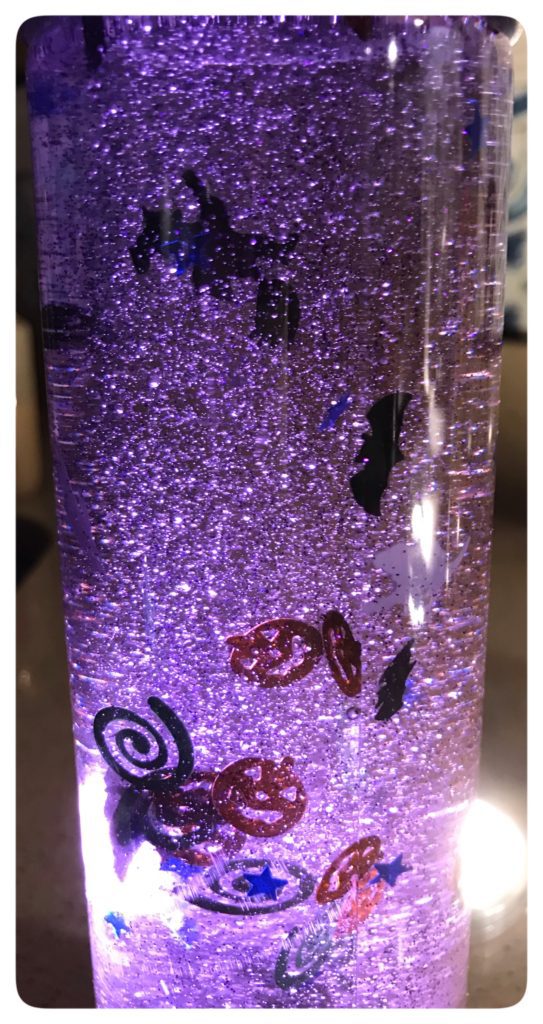
Why Sensory Bottles?
Most of us look at sensory bottles (also called calming bottles) and see the items floating downward, the glitter shimmering and think, “Huh. Cool.” Visually they are interesting and pretty, but are sensory bottles more than that?
I use sensory bottles for my preschoolers and kindergarteners during Rest & Relax, especially at the beginning of the school year. It can be a challenge to keep little ones quiet and still for any length of time. The sensory bottles give them something to shake, hold and watch while we listen to calming music at the end of class. Each week they can choose a different bottle so the process doesn’t get old too quickly.
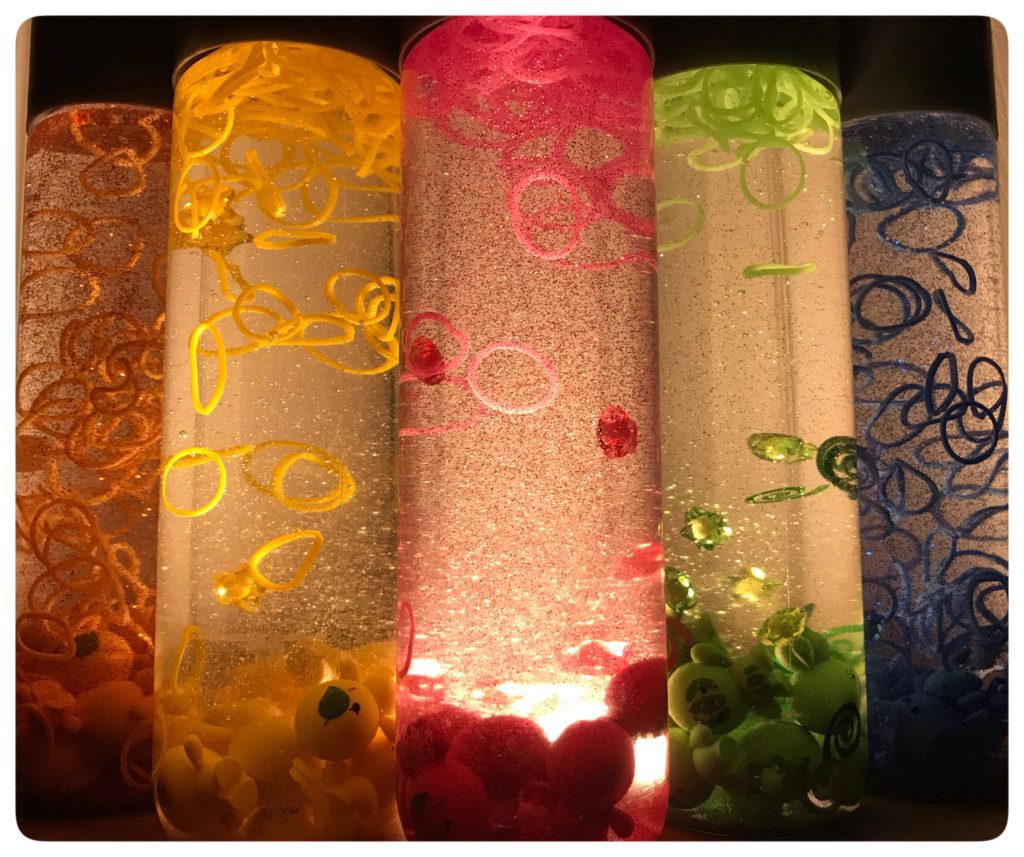
Sensory Bottle Benefits
Sensory bottles can be used as a tool to help calm children who may have difficulty calming themselves. They can be a sort of distraction or used to focus on something besides the anxious or upsetting behavior. Because they are portable, (and GREAT in the car!) children can use sensory bottles almost anywhere, anytime. Keeping a variety of sensory bottles on hand is key. If you are making your own, I urge you to get your children to help make them. Having their input is important. They feel like they contributed to the project and they will more than likely make choices that appeal to them visually. They’re invested.
It’s okay if you purchase sensory bottles. There are so many different online stores that sell them. Take a gander at Etsy for ideas or for some bottles to purchase. If you are purchasing online, try having your child “shop” with you.
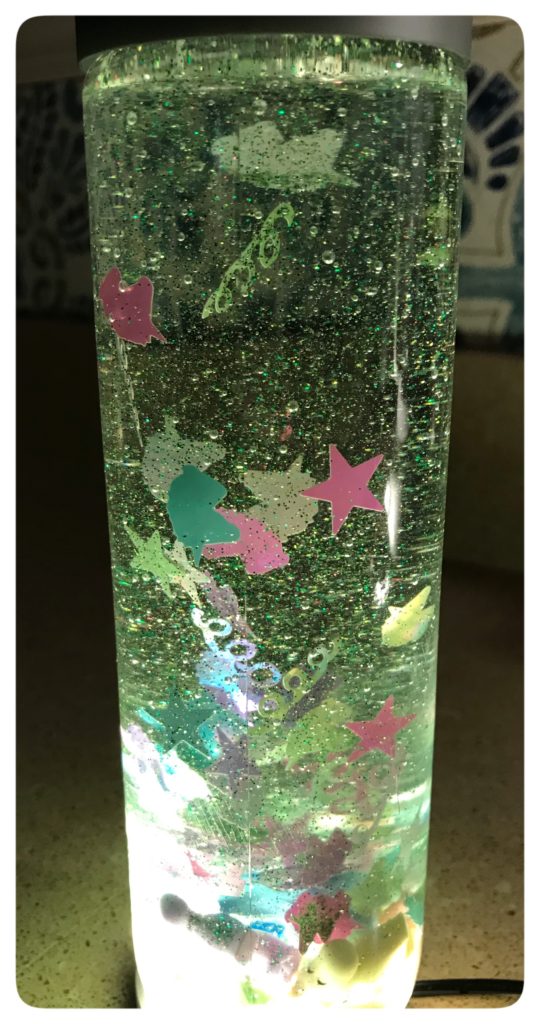
When I make sensory bottles, one of my favorite things to use in them is clear glue. I know. Sounds weird. Glue? Yep. Clear glue. It’s a very dense liquid which works well when you put other items in the bottle. The glue is so thick it tends to slow objects down whether they are rising or falling. I add a little water to thin it a little bit, but I like the effect and the slow objects. It’s calming to me. If you want some things to sink to the bottom quickly, you can use heavier objects and then other, lighter objects, can slowly sink to the bottom of the bottle.
Using a thick, dense liquid like glue also benefits when you use things like fine glitter. The glitter and other light objects like beads or confetti sort of suspend for longer because of the density of the glue. Another benefit of using a denser liquid is that you have to shake the bottle longer and harder for the items in the bottle to shake/move. This provides some needed proprioceptive input for a child who needs to calm their body.
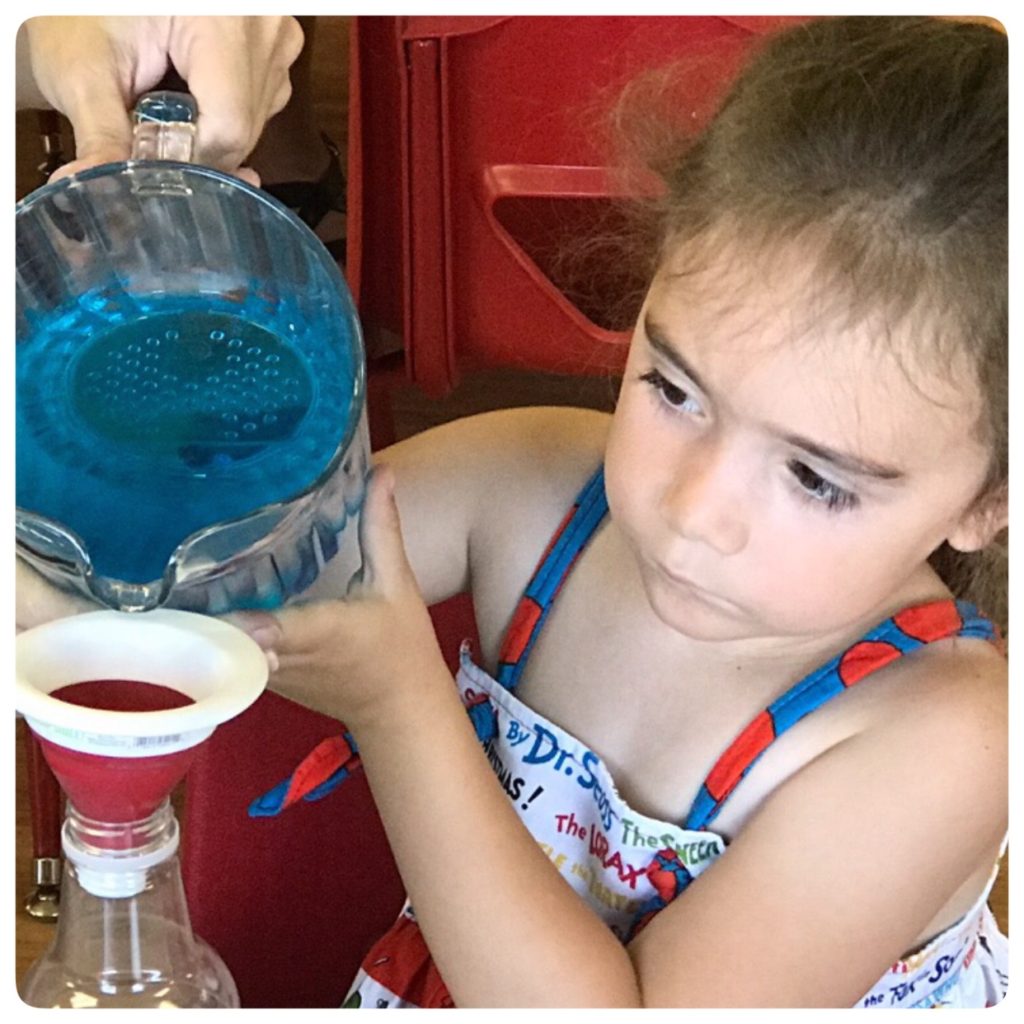
A Few More Tips and Ideas
Another thing I like doing is using puck lights* (I have some that are electric and others that run on batteries) and the children love to set the sensory bottles on the lights. It makes for a rather stunning sight and is almost like a lava lamp in effect. Children can use the lights in their room when going to sleep to help relax them but can also double as a night light.
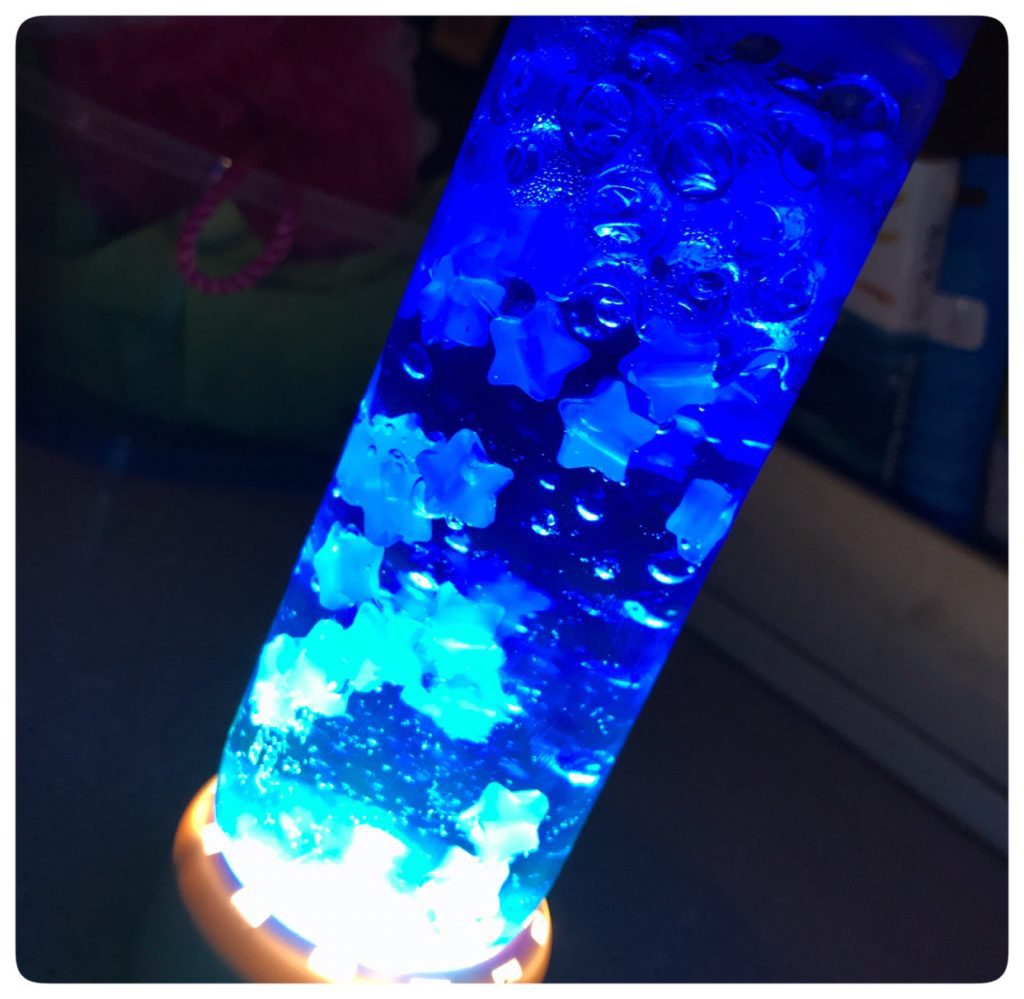
For some smaller children who have sensory processing issues, sensory bottles are great to carry around. With smaller bottles, put one in each hand and go for a walk. Or put a couple in a backpack and have them walk around for awhile with the back pack on.
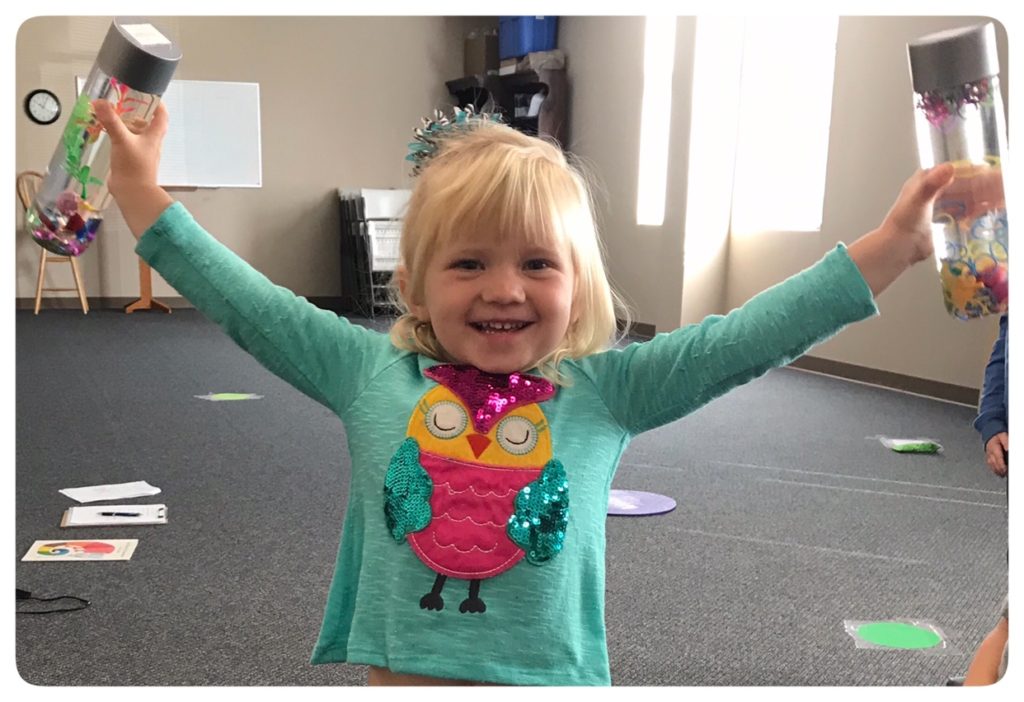
Sensory bottles are also fun to use on a light board or table. This can be a fun family activity before bedtime when you are trying to settle down for the evening, or before naptime.
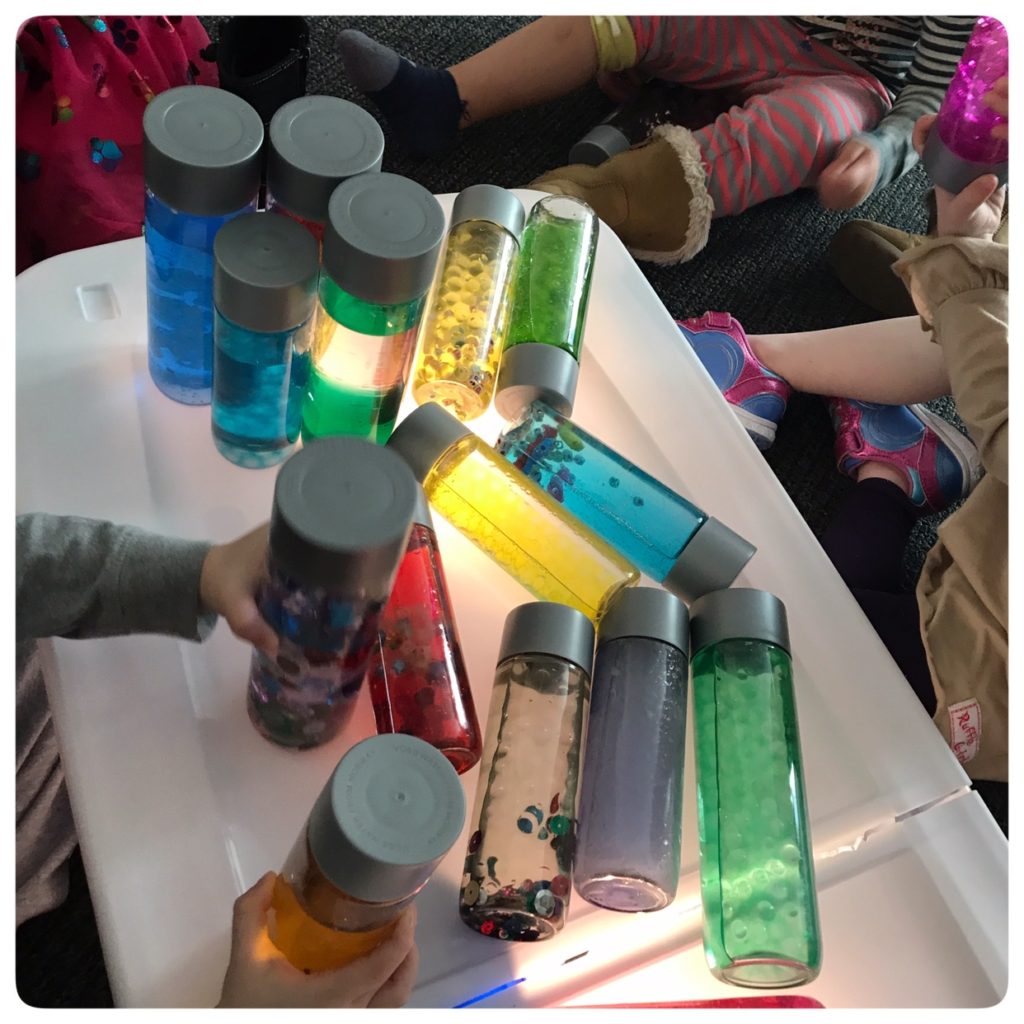
*There are affiliate links in this post. If you click on a link and make a purchase, I receive a small percentage of your purchase (at no extra cost to you).
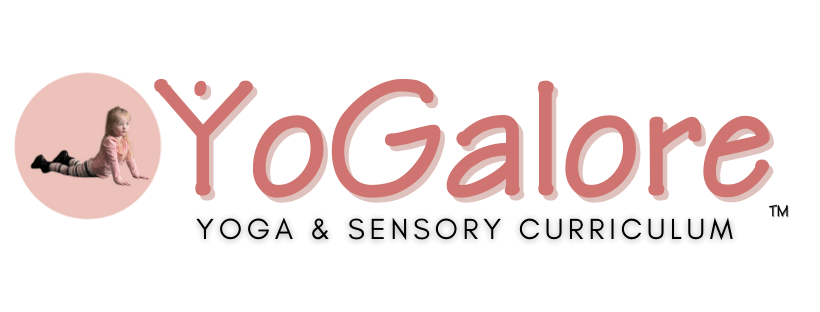
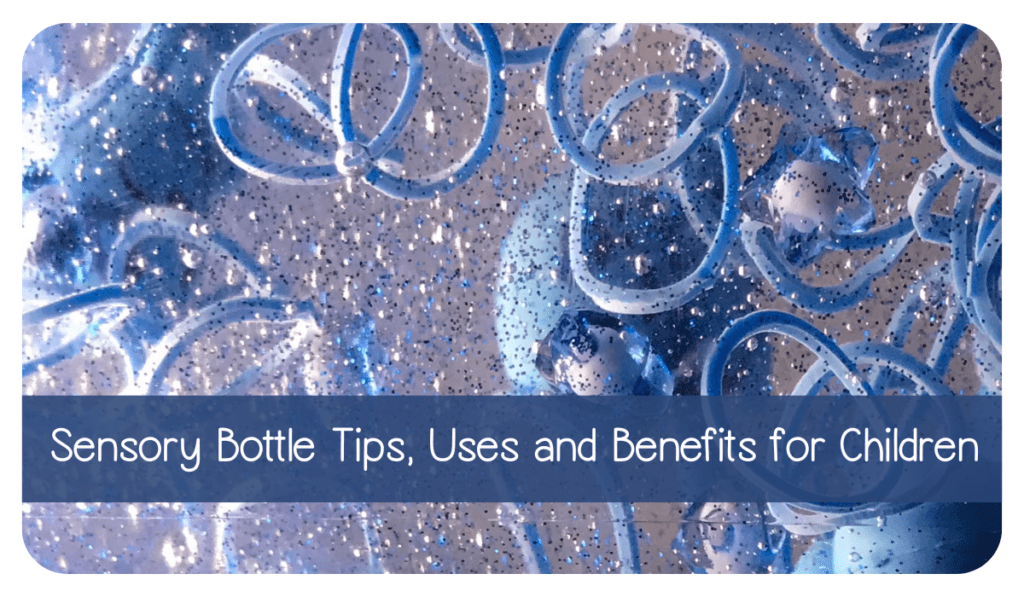
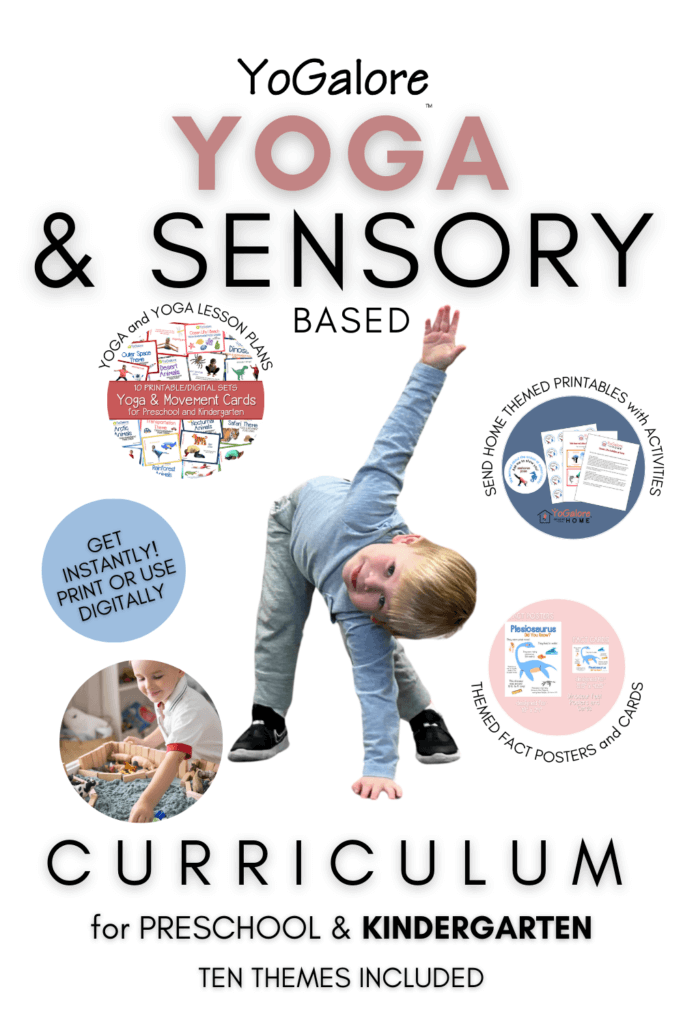
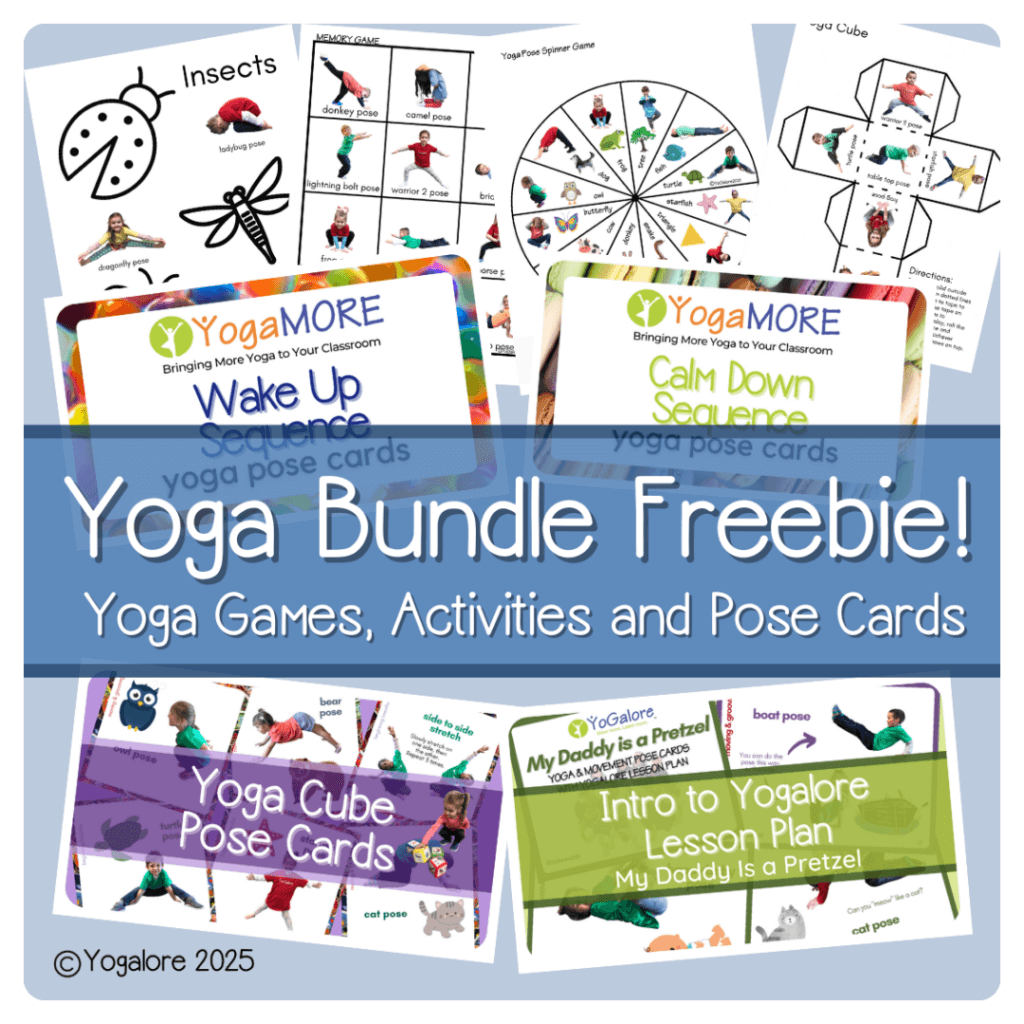

5 Responses